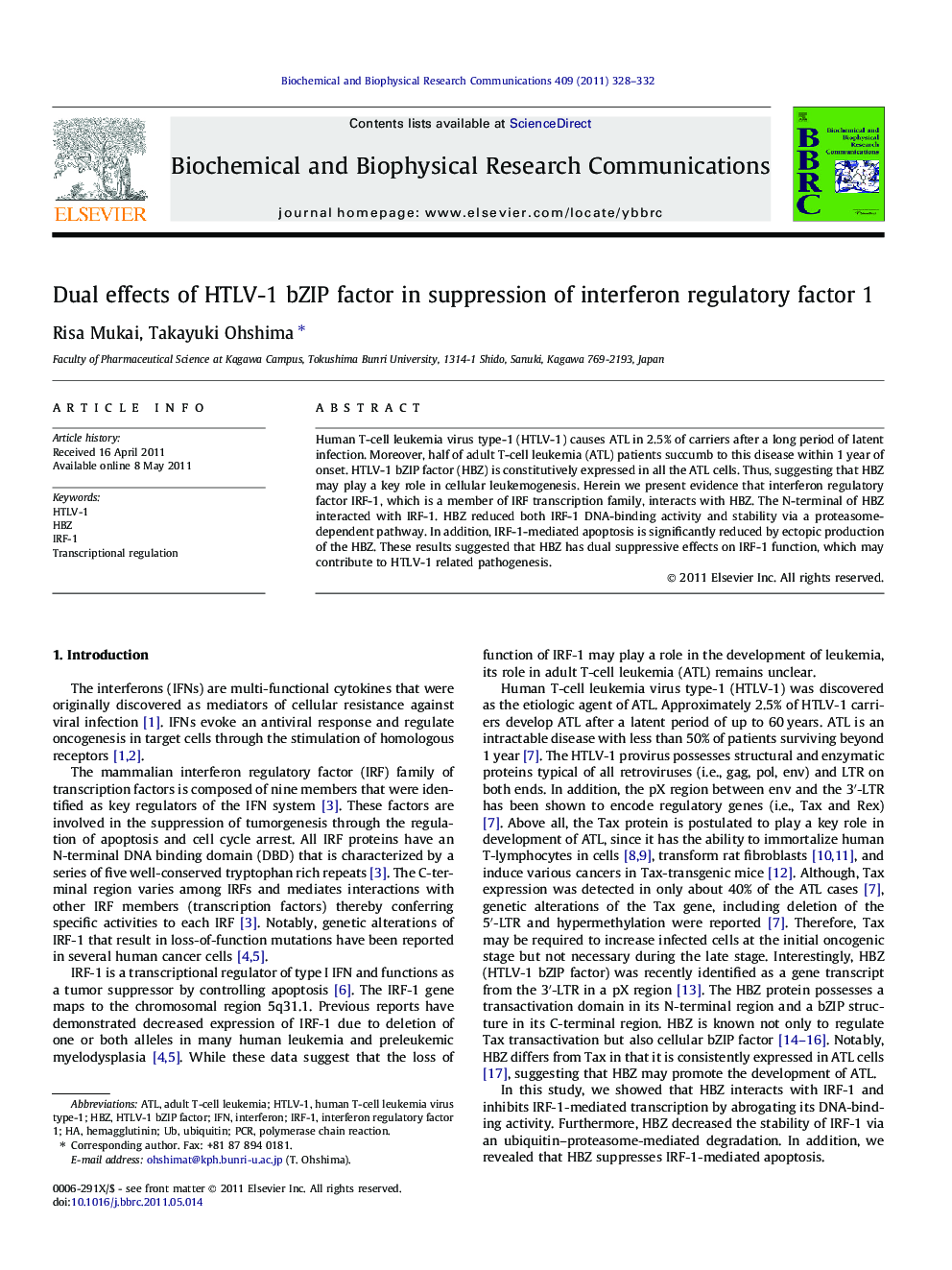| Article ID | Journal | Published Year | Pages | File Type |
|---|---|---|---|---|
| 1930463 | Biochemical and Biophysical Research Communications | 2011 | 5 Pages |
Human T-cell leukemia virus type-1 (HTLV-1) causes ATL in 2.5% of carriers after a long period of latent infection. Moreover, half of adult T-cell leukemia (ATL) patients succumb to this disease within 1 year of onset. HTLV-1 bZIP factor (HBZ) is constitutively expressed in all the ATL cells. Thus, suggesting that HBZ may play a key role in cellular leukemogenesis. Herein we present evidence that interferon regulatory factor IRF-1, which is a member of IRF transcription family, interacts with HBZ. The N-terminal of HBZ interacted with IRF-1. HBZ reduced both IRF-1 DNA-binding activity and stability via a proteasome-dependent pathway. In addition, IRF-1-mediated apoptosis is significantly reduced by ectopic production of the HBZ. These results suggested that HBZ has dual suppressive effects on IRF-1 function, which may contribute to HTLV-1 related pathogenesis.
► The N-terminal region of HBZ interacts with IRF-1. ► HBZ inhibits the transcriptional activity of IRF-1. ► HBZ inhibits the DNA binding ability of IRF-1. ► HBZ enhances IRF-1 degradation. ► HBZ is a negative regulator of IRF-1-mediated apoptosis.
